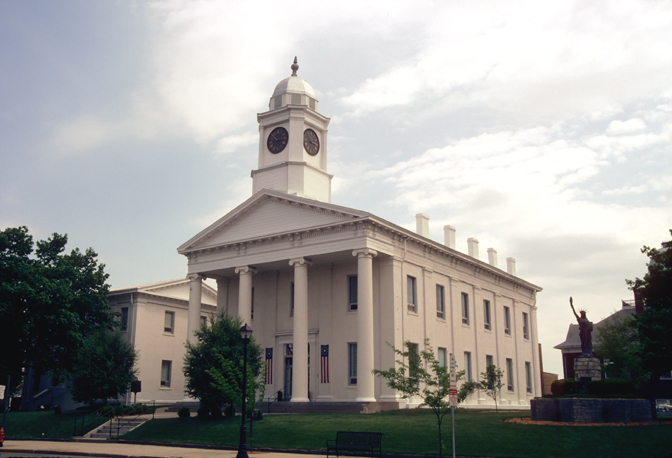Since the founding of our communities, organizations, businesses and citizens have stepped forward to build and serve their community. Click on any of the logos below to learn about those who made this website possible! If you would like to learn about becoming a sponsor CLICK HERE!
- County: Lafayette County, MO
- Region: Northwest MO
- Sponsors
- About Lexington, MO
- Businesses
- Community Organizations
- Faith Organizations
- Festivals and Events
- Points of Interest
- Veterans
- Visit Website
Learn how to Contribute to any of the above categories.
No news yet. Got some news? Hit that NEW POST button!
About Lexington, MO
The historic city of Lexington is located on the bluffs overlooking the Missouri River in Lafayette County, Missouri. Lexington was platted in 1822 near William Jack’s Ferry, which had been established just three years earlier on the south bank of the river. The city was named after Lexington, Kentucky. The earliest settlers were primarily from Kentucky and Virginia, and later came the German, Irish and Italian immigrants.
The seat of Lafayette County since 1823, Lexington grew rapidly during the following decades due to its strategic location on the Missouri River. John Aull opened a mercantile store in 1822. A short time later, he was joined by his brothers, James and Robert. The Aull Brothers soon had one of the first frontier retail chains, operating stores in Liberty, Independence and Richmond.
In 1852, Lexington experienced one of the worst steamboat accidents in Missouri history. A side-wheeler steamship called the Saluda was carrying as many as 250 Mormon passengers en route to Salt Lake City, Utah, via Council Bluffs, Iowa. The trip had been hampered by a strong current and ice on the Missouri River, and for three days the ship was unable to negotiate the big bend in the river at Lexington. The frustrated captain apparently tied down the safety valve, and ordered full speed ahead while putting cold water in hot boilers. On the second turn of the paddle wheel, the boilers exploded, killing the captain and more than 75 others, including two people standing on the banks of the river. The people of Lexington provided aid to the survivors and adopted several orphans. The unidentified victims are buried in a mass grave in Lexington’s Machpelah Cemetery. A memorial at 13th and Franklin Avenue has been erected honoring the memory of those who died and those who helped the survivors.
The Great Depression and the stresses of World War II ended the second period of great prosperity in Lexington’s history. The coal mines, which mined soft coal, were closed. All of the private schools except Wentworth Military Academy were gone. Most of the local factories and utilities were either closed or combined with larger companies. Lexington remained a regional center with a variety of local shops, small factories, a new hospital, and the headquarters of Mattingly’s, a chain of dime stores.
However, the beginning of a new role in the world began to emerge in 1959 when the local battlefield became the Battle of Lexington State Historic Site. In 1961 about 20,000 spectators came to see a reenactment commemorating the one hundred year anniversary of the Battle of Lexington. People in Lexington were beginning to realize that their rather unique heritage was of interest to many people. Fortunately, many of the buildings associated with that history had survived, and about 500 were put on the National Register. People began to restore houses and shops. Museums were started. Historical organizations became active. Regular heritage activities were held. People who were interested not only came to visit, but many of them came to buy homes and start businesses. By the 1980s Lexington became a tourist destination and was entering a third period of prosperity that continues to this day.
Businesses of Lexington, MO
The businesses of our towns are truly the lifeblood of each community, click on any businesses below to learn about them, to learn how to add your business to your town and county page CLICK HERE!
Lafayette County, MO
Visit our county page and you will find information about our town and county's points of interest, festivals/events and faith community. You also will learn about the community organizations that have built and continue to build strong communities (chambers, community groups, and departments, etc) and much more when you visit the Lafayette County, MO page.

